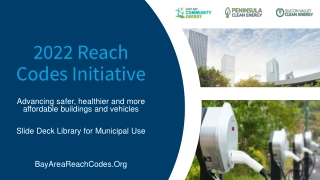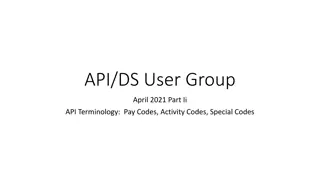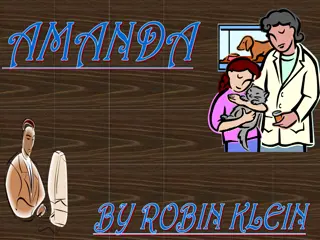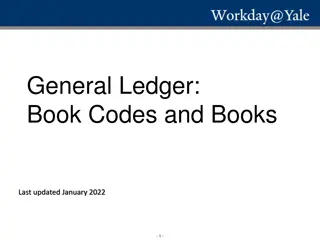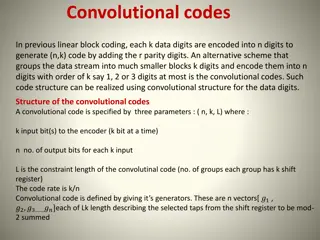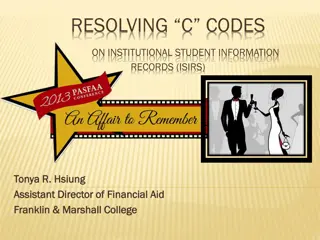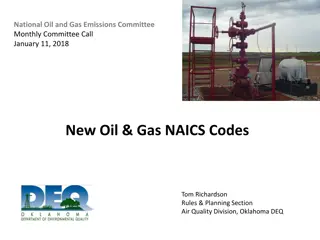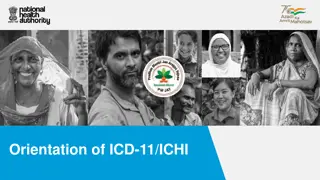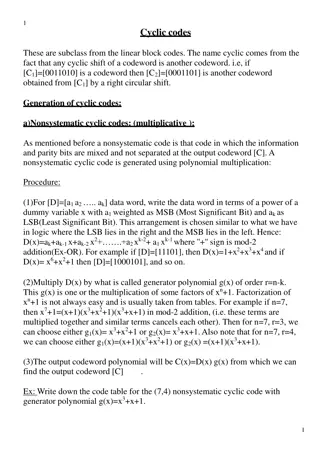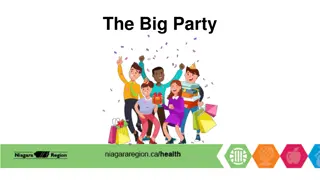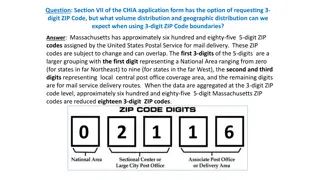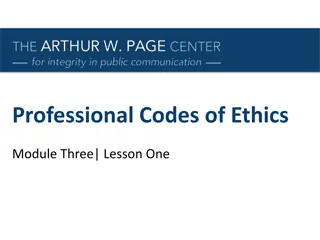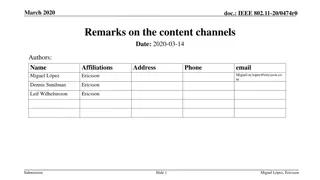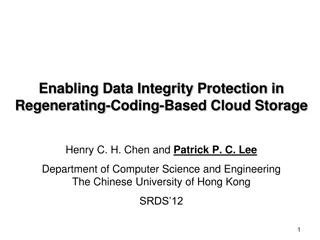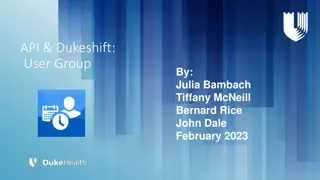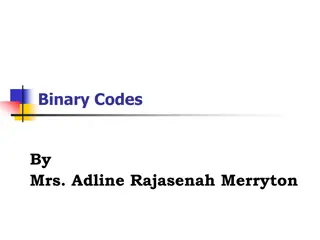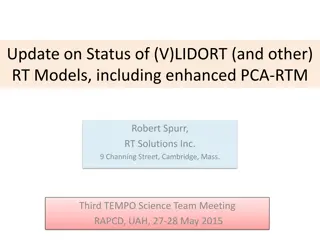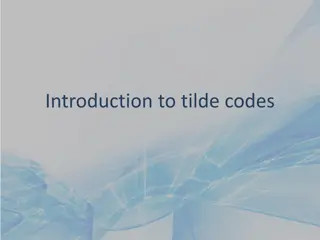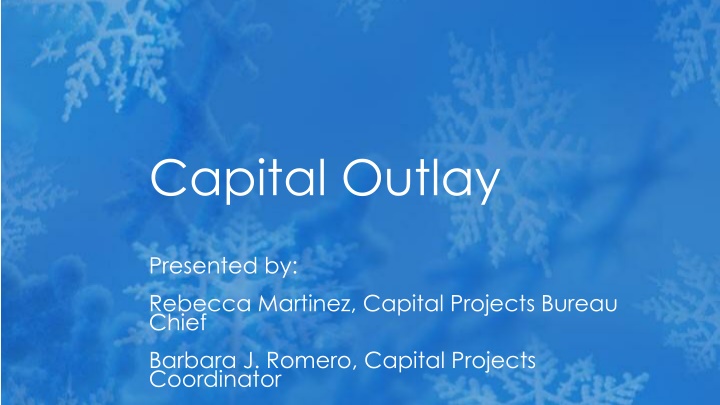
Amanda Jessee - Codes and Regulations Office
Amanda Jessee is an Interior Design major with expertise in reading construction documents, drafting, sketching, carpentry, and event coordination. She finds joy in the development of new buildings in her city and encourages others to consider a career in the construction industry.
Download Presentation

Please find below an Image/Link to download the presentation.
The content on the website is provided AS IS for your information and personal use only. It may not be sold, licensed, or shared on other websites without obtaining consent from the author. If you encounter any issues during the download, it is possible that the publisher has removed the file from their server.
You are allowed to download the files provided on this website for personal or commercial use, subject to the condition that they are used lawfully. All files are the property of their respective owners.
The content on the website is provided AS IS for your information and personal use only. It may not be sold, licensed, or shared on other websites without obtaining consent from the author.
E N D
Presentation Transcript
Capital Outlay Presented by: Rebecca Martinez, Capital Projects Bureau Chief Barbara J. Romero, Capital Projects Coordinator
Todays Presentation: Current Status of 2018 Capital Outlay Recommendation Criteria for Funding How to submit a successful application Grants Management How to ensure projects are timely
2018 GOB Capital Outlay Recommendation 157 Applications Received Totaling $29,222,272 78 projects recommended for a total of $10,754,878 66 project did not meet the fundable range
Criteria for Funding Capital Outlay Request Application Critically Needed Projects-- $10,000 Threshold Situation in which immediate action is necessary. The situation would disrupt a senior center from operating. The situation endangers the safety of clients. Failure is imminent if the issue(s) are not corrected in a timely manner. The situation was not a direct cause of poor maintenance or neglect and steps were taken to prevent, alleviate and/or correct the situation. The resources required to correct the situation were unavailable.
Capital Outlay Request Application Funding Categories A-1: Improvements for Code Compliance A-2: Renovations A-3: Meals Equipment/Other Equipment A-4: Vehicle Purchase & Equip A-5: New Construction/Major Addition A-6: Plan & Design
Capital Outlay Request Application Requirements & Attachments Executive Order 2013-006 Compliance Operating and Use Agreement (applicable to non-profit providers only) Infrastructure Capital Improvement Plan (ICIP 2019-2023) Chief Elected Official Certification Asset Management Listings For: Meals Equipment, Vehicles & Facility/Fixtures Project Evaluation-Subject Matter Expert Certification Quotes or Cost Estimates for the Proposed Project(s) Schematic Designs (applicable to construction related projects)
Capital Outlay Request Application (Contd) Project readiness: Is the project realistic? Can the project be substantiated by a Subject Matter Expert? Mandatory quotes/cost estimates provided? How are the operating and maintenance costs provided? Phased projects When do we consider phasing a project? What constitutes a phased project
Capital Outlay Request Application Training Goal To improve the overall quality of applications submitted. Training materials & presentations on website 1/15/2018 http://www.nmaging.state.nm.us/capital-outlay.aspx Recorded video training presentation. Area Agencies on Aging and Councils of Governments to assist with application technical assistance.
2019 STB Capital Outlay Request Application Training & Technical Assistance Schedule Release of Request Application http://www.nmaging.state.nm.us/capital-outlay.aspx 4-6 Training sessions will be scheduled around the State. WEBINAR 1/15/2018
How to Submit a Successful Application
Community/Staff Involvement Who should be involved? Project Development Team Present needs and assess priorities Determine if they can be phased Look for other funding sources Fact Gathers Solicit professional guidance Determine cost estimates Develop timelines Action Group Assist in preparing the application Seek community input Internal staff Senior Ctr. Team Development Project Director
Project Development Team Needs Are they critical in nature What is the effect on clients Asset management listings Code compliance issue Professional opinion How did we determine the urgency Can we pay for the project Do we have any O & M funds available Is it a major project or can it be phased Is there a need to phase the project. Can we spend the funds within 2 years
Fact Gathers Solicit professional opinions What type of professional do we need Roofing, flooring, structural, plumbing Determine preliminary cost estimates Obtain a cost proposal or estimate from one or more professionals Better to get a couple to compare Develop a realistic timeline Determine if project needs to be phased If phased a working phase must be complete Develop Timeline
Action Team Who should be responsible for completing the application Mayor, finance director, senior center director, etc.,,, How much time should we dedicate Plan on this taking around 3 months to complete the process Schedule professionals at the start Hold meetings twice a month and progress closer to submission time Do we call the agency or do you notify us What to expect after submission
Timelines for Project Funding Revised application made available in mid-January Applications are due in April Agency reviews and rates projects April through June Agency meets with Cabinet Secretary in June and submits ICIP by July 1 Capital Outlay Hearings are conducted in October and November by DFA and LFC Projects are considered and DFA submits the list of projects to grant writers in December in anticipation of the Legislative Session If successful, the bill is passed. STB will fund by June same year GOB will go to voters on November ballot if successful the funds will be available in June following year
Scoring Criteria For the 2018 GOB Application, there was a possible scoring value of 115 points PROJECT PRIORITIZATION SYSTEM 1. Application Narrative Summary & Background 2. Criticality of Need 3. Funding 4. Readiness to Proceed 5. Project Oversight 6. Cost-Benefit 7. Project Management 10 points 30 points 15 points 15 points 15 points 10 points 20 points Total Possible Points 115 points
Project Prioritization System 1. Application Narrative Summary & Background-The applicant provided a clear and concise project summary and narrative background regarding the proposed project. 2. Criticality of Need-Does the applicant provide a compelling explanation on how the project will eliminate a risk or hazard to public health and/or safety that immediately endangers occupants of a premises such that corrective action is urgent and unavoidable? The proposed project was evaluated by a subject matter expert who clearly documented the criticality of need for the project and a copy of the evaluation is provided. Is the proposed project a code compliance issue which addresses an emergency situation? The applicant documented the outcome of not receiving this funding and that the intended corrective action proposed is considered critical, urgent and/or unavoidable. 3. Funding-The applicant provides leverage to the project with local, federal or other sources to fully fund the proposed project. The project budget provided specific information on the sources for matching funds including the amount leveraged and effective date(s). Do the requested funds complete a fully functional phase of the project or complete a project previously funded by a legislative appropriation?
Project Prioritization System 4. Readiness to Proceed-The proposed project is realistic and is substantiated by the subject matter expert evaluation. The applicant provided mandatory quotes/cost estimates for the proposed project? Does the applying entity describe how operating and maintenance costs will be provided for upon completion of the project? 5. Project Oversight-Are there oversight mechanisms built in that would ensure timely construction and completion of project on budget? 6. Cost Benefit-Has the applicant provided information on the anticipated number of direct beneficiaries of the project compared to the amount of funding being requested? 7. Project Management-per contract requirements for currently funded capital projects through ALTSD, is the applicant: Reporting project status timely into the CPMS? Submitting requests for payment within the quarter that the expenditure was made? Adhering to spend down requirements per SBOF Rule (5% encumbered and/or 85% expended)
Applications Deemed Ineligible May Be Due To: Application is not signed by a Chief Elected Official Applicant did not provide mandatory forms Applicant did not provide mandatory quotes, cost estimates Applicant did not provide sufficient justification of critical need Project is not eligible for funding Unable comply with NM Constitution Anti-Donation clause Project was funded in a prior year (duplicate) Project was not realistic
Projects that are Funded You will receive a bond project questionnaire from SBOF complete timely When you should sign or choose to wait for a later bond sale Bonds will be sold about a month later Once bonds are sold, DFA will prepare budgets and notify Agency when complete ALTSD will prepare Notice of Grant Award requesting compliance with special conditions (if applicable) and request a scope of work Upon receipt, ALTSD will review documentation and then initiate grant agreement Then the clock starts ticking BOND RULES
State Board of Finance Bond Project Spend Down Requirements
Responsibilities of the Grantee Effective dates of the grant agreement(no extensions will be given) Notice of Obligation ALTSD, State Board of Finance obligation requirements 5% - 6 months 85% - 18 months Timelines Allowable uses of the funding Timely expenditures Quarterly Reporting Monthly Scope of work
Notice of Obligation Article II of the grant agreement Submit copy of third party obligation to ALTSD upon execution (contract, cost estimate, quote, contract, purchase order) Department can issue Notice of obligation or request additional documents to justify the expense Notice of obligations will not be issued if ALTSD does not feel the expenditure will occur before reversion Notice of obligation will be effective on the date issued by ALTSD.
Timelines To the extent possible please adhere to timelines set by staff when receiving written correspondence Questionnaires response period is approximately 1 week Request for additional information if no date indicated then we need the information immediately Memo sent from our office will include a respond by date or submit by date Scope of work will include a return by date Special condition documentation release of grant is dependent on approval Use or Operating agreements release of grant is dependent on approval
Expenditures Ensure that expenditures are only for the intended purpose Contact ALTSD if you have questions if an item to be purchased or constructed is an allowable expense. Expenditures must be made and item received on or before the reversion date to qualify for reimbursement ALTSD will provide written denial for items that are not allowed.
Capital Projects Monitoring System CPMS is a web-based system used for reporting and monitoring of capital outlay appropriations will be used by the Legislative Finance Committee (LFC) agency needs to begin reporting once funding is appropriated local entity needs to begin reporting once a grant agreement has been executed on progress of project. CPMS can be accessed through the DFA website at the following link: http://cpms.dfa.state.nm.us
Reporting Paper reports are due on or before the last day of the month Online reports should be entered on or before the last day of the month Additional request for information will be requested in writing Reports must be informative. Lack of reporting can prevent a reimbursement from being processed by ALTSD Reporting periods prior to the Legislative session are the most important.
Requests for Reimbursement Reimbursement must be requested 20 days from the end of the quarter in which the expenditure took place SBOF limits request to $1500 or more unless this is the end of the fiscal year or it is the last reimbursement request End of fiscal year deadlines will be earlier than the July 15 date to allow time for corrections and internal processing Exhibit 1 must be typed and computation must be correct include AIPP if applicable see grant Copy of invoice, purchase orders, cancelled checks, and title for vehicles must be included
Close Out Project Ensure that all expenditures have been reimbursed prior to submission to request close out Upon submission of final pay request send a letter requesting that the project be closed ALTSD will mail a close out letter detailing the expenditures and any reversions Make sure that the completion dates are entered into CPMS database (provide copy of report)
Questions????? Rebecca Martinez, 505-476-4768, rebeccas.martinez@state.nm.us Barbara J. Romero at 505-476-4704, barbara.Romero@state.nm.us

